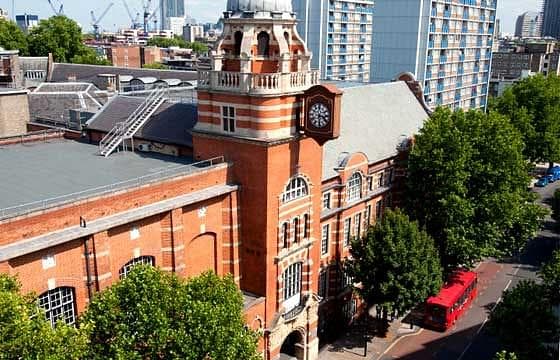This accredited integrated master’s covers mechanical, computational and sustainable life-cycle engineering in this high-tech field. Over four years, students develop professional engineering skills, with a focus on innovative and sustainable solutions to future Aeronautics and Aerospace trends.
Individual and group engineering design projects demonstrate students expertise to future employers. Whilst a fourth year, at master’s level, it helps to transition from study to professional practice.
-
Benefit from strong links to industry and exceptional industry involvement in the degree programme. Profit from City’s vision of sustainable engineering, a fundamental aspect in future Aerospace Engineering.
-
Study in world leading test facilities, including our low-turbulence wind-tunnel and high-speed tunnel belonging to the UK National Wind Tunnel Facility initiative.
-
Work with modern state-of-the art experimental equipment and high-performance computational fluid solvers, both being developed at City and supported by world-experts in those fields.
-
Enjoy easy access to our central London location and benefit from the links to our international aviation program, with City being the hub for the aviation industry with satellites in Dubai and Germany.
-
Boost employability within an optional placement year or placement over two summer periods, which offers first-hand experience in professional industry. Recent placements have included BAE SYSTEMS, Rolls Royce, Raytheon.
This course is subject to approval.
Course content
Students develop a strong technical background in the key subjects of Aerospace Engineering such as air/space-ship structure, design, propulsion, control and manufacturing. Management studies and sustainable life-cycle engineering skills are also integral parts of the course.
Year 1
Build a firm foundation in mathematics, engineering, physics, materials and manufacturing, thermo-fluids electronics and computing, with our largely shared engineering first year.
-
The Engineering in Society - Social responsibility (15 credits)
-
Engineering Design 1 (15 credits)
-
Introduction to Mechanics of materials and manufacturing (15 credits)
-
Electronics - including circuits, digital and analog electronics (15 credits)
-
Introduction to programming (15 credits)
-
Engineering Science (15 credits)
-
Mathematics 1 (15 credits)
-
Introduction to Thermodynamics and Fluid Mechanics (15 credits)
Year 2
Grow knowledge in Aerospace engineering with modules including fluid mechanics and thermodynamics, structures and materials, mechatronics and systems, data processing and analysis. Understand how Aeronautics / Aerospace engineering is part of the circular economy.
-
The Engineer in Society: Sustainability and Circular Economy (15 credits)
-
Mathematics 2 (15 credits)
-
Engineering Design 2 (15 credits)
-
Fluid Mechanics (15 credits)
-
Structures and Materials (15 credits)
-
Thermodynamics (15 credits)
-
Mechatronics and Systems (15 credits)
-
Data Analysis for Engineers (15 credits)
Year 3
Deepen expertise with applied modules in analysis and design of typical aircraft, composite materials and manufacturing, structural analysis, aerospace propulsion, gas dynamics and flight mechanics and control. Enjoy the learning experience of wind-tunnel flows and complete an aerospace engineering design group project.
-
Individual project (30 credits)
-
Aerospace Engineering in the society (15 credits)
-
Composite Analysis and Manufacturing (15 credits)
-
Aerospace Propulsion (15 credits)
-
Gas Dynamics (15 credits)
-
Flight Mechanics (15 credits)
-
Telecommunication Systems (15 credits)
Year 4
Transition from academic study to professional practice with a major integrated design project supported by our industry partners and individual research work. This is complemented by advanced modules in computational simulations techniques and experimental methods and advanced aerodynamics in addition to a selection of two optional modules.
-
Design project group (30 credits)
-
Aerospace Engineering practice in society (15 credits)
-
Computational Fluid Dynamics (15 credits)
-
Structural Dynamics and Aeroelasticity (15 credits)
-
Advanced Aerodynamics (15 credits)
-
Electric and Hybrid Vehicles (15 credits)
-
Robotics Imaging and Vision (15 credits)
-
Unmanned Aerial (15 credits)
-
Composite Assembly and Joining (15 credits)
-
Airworthiness and Maintenance (15 credits)
-
Entrepreneurship (15 credits)
-
Gas Turbine Engineering (15 credits)
-
Machine Learning (15 credits)
-
Digital Communication Systems (15 credits)
